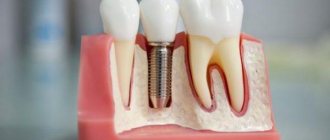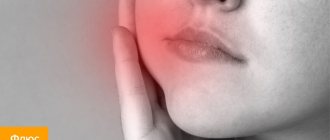Many people tend to endure pain, cope with discomfort with improvised means, take painkillers and limit themselves to complaints to loved ones that their temples are pressing and they are dizzy. This is often attributed to overwork due to heavy physical or mental labor, nervous tension and other reasons. At the same time, only a few go to doctors, and yet there can be quite a lot of causes for the occurrence of squeezing, aching or even acute pain in the temples in combination with dizziness, and not all of them are harmless.
Manifestations of headache and accompanying symptoms
We call any pain in the head area a headache, but the mechanism of its occurrence varies. It is caused by irritation of pain receptors in the dura mater, as well as blood vessels, nerves - trigeminal, glossopharyngeal, vagus, skin nerves, head muscles, cervical spinal roots. It can also manifest itself in different ways: it can be dull, pulsating, squeezing, bursting; can concentrate in the forehead, temples (on one or both sides), back of the head, crown of the head. Attacks can be strong, moderate or weak, and vary in duration and frequency. Pain may be accompanied by other symptoms (nausea, vomiting, visual disturbances, dizziness, increased or decreased blood pressure, etc.). All these characteristics are important for making a diagnosis.
Diagnostics
If you regularly experience discomfort in your temples and dizziness, you should definitely consult a doctor. If there are signs of vascular diseases, you should make an appointment with a cardiologist; in other cases, a consultation with a neurologist is indicated. If it is not possible to measure blood pressure or the nature of the symptoms does not allow you to independently figure out which specialist’s help is needed, it is better to initially consult a therapist. A general practitioner will help determine the cause of the problem and, if necessary, refer the patient to a specialist.
Initially, a survey of the patient is carried out, during which the characteristics of pain in the temples, the circumstances of its occurrence, the type of dizziness and the nature of other symptoms present are established. The doctor must examine the patient, measure blood pressure and, if necessary, perform neurological tests, which helps narrow the list of possible causes of poor health.
For accurate diagnosis of pathology and assessment of the severity of changes, the following may be prescribed:
- X-ray of the cervical spine;
- CT scan of the brain and skull;
- MRI of the brain and cervical spine;
- CT angiography;
- Ultrasound scanning of the vessels of the neck and head;
- 24-hour blood pressure monitoring;
- electroencephalography (EEG);
- UAC, OAM.
Causes of headaches
There are primary and secondary headaches. Primary pain is considered to be pain that is not an accompanying symptom, but is an independent disease. In this case, it is the headache that is the main problem. Secondary headache is one of the manifestations of a disease that is not limited to headache. Severe headaches can be accompanied by infectious diseases and poisoning of various natures (both toxic substances entering the body from the outside and those produced inside the body, for example, toxins that are formed as a result of the activity of viruses and pathogenic microbes in the body). A headache can occur as a result of stress, weather changes, hypothermia or overheating of the body, lack of sleep, hunger, overeating, lack of oxygen - the cause can be anything that leads to disruption of the metabolism necessary for brain activity.
So, if you have a headache, it does not necessarily mean that you are sick: it may simply be the result of a random factor. However, if the headache occurs periodically or persists for a long time, then most likely there is some kind of disease. In 95% of such cases, there is a primary headache, and only in 5% of cases is it secondary.
Primary headache. Major diseases.
The most common forms of primary headache are “tension pain” and migraine, more rarely – cluster headache and other forms.
Tension headache (TTH)
can occur in anyone. This is the most common form of headache and is often characterized as a “normal” or “regular” headache. Attacks can last from 30 minutes to several days. The frequency of attacks varies from person to person, and it can also vary from one person to another during different periods of his life. The pain is described as squeezing, squeezing the head like a hoop or tight hat, usually bilateral, and moderate. In some people it can become chronic (chronic pain is diagnosed if there are more days with a headache than without it). A person experiencing chronic headaches becomes irritable. Weakness, fatigue, decreased appetite, and sleep disturbances may occur. The cause of TTH is physical tension in the muscles and ligaments of the head and neck - the so-called “muscle stress”, which can be a consequence, for example, of working in an uncomfortable position. TTH often occurs in those who work at a computer or whose work involves the need to look at details (jewelers, watchmakers, assemblers of electronic equipment, masters of artistic embroidery, etc.). The emotional factor is also important: emotional tension caused by stress or a state of increased anxiety can also lead to pain.
Migraine
characterized by severe and painful attacks of headache, which are often accompanied by nausea (and in some cases vomiting), as well as intolerance to light and sound. The perception of smells changes, thermal sensations are disrupted. Migraine attacks last from 4 hours to 3 days and can be repeated with a frequency of 1-2 times a year to several times a month. During an attack, so-called “precursors” may be observed - irritability, depression, fatigue, occurring several hours or even days before the onset of pain. In a third of cases, pain is preceded by phenomena called “auras”: 10-30 minutes before the attack there may be visual disturbances (blind spots, flashes, zigzag lines in front of the eyes), tingling and numbness starting from the fingertips and spreading up the body and etc.
Predisposition to migraine is congenital and is associated with disorders in the brain structures responsible for pain and other sensations. Every seventh adult suffers from migraines, with women three times more likely than men. In girls, migraines usually begin during puberty.
Factors that contribute to the development of migraine attacks: chronic fatigue, anxiety or stress, in women - menstruation, pregnancy and menopause.
But a predisposition to seizures does not mean that an attack will definitely happen. There are factors that act as a “trigger” for an attack. An attack can be triggered by: skipping meals, insufficient fluid intake, certain foods, sleep disturbances, physical activity, changes in weather, sudden changes in emotions.
Cluster (or beam) headache
characterized by one-sided sharp (“dagger” or “drilling”) pain. The intensity of the pain rapidly increases within 5-10 minutes, and the attack itself lasts from 15 minutes to 3 hours, during which the patient cannot find a place to rest. The pain is usually localized in the eye area, and the eye may become red and watery. Recurrent attacks form a cluster (that is, they follow each other), the duration of the cluster is from 6 to 12 weeks. This form of pain occurs five times more often in men than in women. However, those who smoke a lot or have smoked in the past are more susceptible to it.
Diagnosis and treatment of psychogenic dizziness
Dizziness is one of the most common symptoms in neurological and general somatic practice. Complaints of dizziness rank third after complaints of headache and back pain. First of all, you must remember that dizziness is just a symptom and not an independent disease. It can be a manifestation of various sufferings - cardiovascular, endocrine, mental, diseases of the spine, brain, etc., in total there are about 80 different nosological forms. Determining the causes of dizziness and its treatment require a multidisciplinary approach, and sometimes the use of complex equipment. Due to these objective difficulties, no more than 20% of patients receive a correct diagnosis and adequate treatment [1].
The head of a large otoneurological clinic in Germany and the author of the famous monograph “Dizziness,” Thomas Brandt, cites in it the most common causes of dizziness. Psychogenic dizziness, including paroxysmal phobic dizziness, ranks second after benign paroxysmal dizziness (Fig. 1).
The cause of psychogenic dizziness can be any mental illness, but most often anxiety disorders.
Diagnosis of psychogenic dizziness
Psychogenic dizziness refers to vague sensations described as dizziness, which most often occur in neurotic, stress-related disorders.
Diagnosis of psychogenic dizziness includes two sequential and mandatory stages.
The first stage is a negative diagnosis aimed at excluding all other possible causes of dizziness:
- damage to the vestibular system at any level;
- somatic and neurological diseases accompanied by lipothymia;
- neurological diseases accompanied by impaired walking and balance.
This requires a thorough examination of the patient, in some cases with the involvement of otoneurologists, cardiologists, hematologists, etc., as well as a thorough paraclinical study.
Thus, when examining a patient with dizziness at the first stage, it is important to determine the type of dizziness. To do this, you should carefully collect anamnesis - ask the patient in detail what he means by the word “dizziness.” With vestibular, systemic, true vertigo or vertigo, the patient experiences an illusory sensation of movement of a stationary environment in any plane, as well as a sensation of movement or rotation of his own body. The cause of systemic dizziness is damage to the vestibular analyzer at the peripheral or central level.
Psychogenic dizziness is always non-systemic in nature. The patient describes any sensations other than rotation: fog in the head, instability, fear of falling, and others.
When making a differential diagnosis, it is also extremely important to identify and clarify the nature of concomitant somatic and neurological manifestations to exclude other “organic” causes of non-systemic dizziness. For this purpose, a study of nystagmus, balance tests, audiography, computed tomography (CT) or magnetic resonance imaging (MRI), Doppler ultrasound of the main arteries of the head, compression-functional tests, radiography of the skull, internal auditory canal, cervical spine, complete blood count, fasting blood sugar, blood urea nitrogen and other studies [4].
The second stage is a positive diagnosis of neurotic disorders associated with stress.
Among emotional disorders, the most common cause of dizziness is anxiety or anxiety-depressive disorders. It is the frequency of anxiety, which is the most common emotional disorder and is observed in 30% of the population, that determines the high prevalence of psychogenic dizziness.
The clinical picture of anxiety disorders consists of mental symptoms, the most common of which are anxiety, worry about trifles, a feeling of tension and stiffness, as well as somatic symptoms, mainly caused by increased activity of the sympathetic division of the autonomic nervous system. One of the commonly observed physical symptoms of anxiety is dizziness and lightheadedness. The combination of mental and physical symptoms is not accidental - when the body is threatened or there is any potential threat, preparation occurs to fight the danger or flee from it. These changes in the body are ensured by the autonomic nervous system, which is a potential “bridge between the psyche and soma.” The most common symptoms of anxiety are presented in Fig. 2, 3.
Purely anxiety disorders are relatively rare in clinical practice. In most cases, in 70% of patients, anxiety disorders are combined with depressive disorders. The mental symptoms of anxiety and depression are largely similar and overlap. The comorbidity of the two most common mental disorders is determined by common biochemical roots—the role of serotonin in the pathogenesis of both conditions is discussed. The high effectiveness of both tricyclic antidepressants (TCAs) and some selective serotonin reuptake inhibitors (SSRIs) for both anxiety and depression confirms that serotonin has both anxiolytic and antidepressant effects. Finally, with the long-term existence of anxiety disorders, the patient inevitably develops a feeling of complete spiritual paralysis and depression develops. The onset of depression is accompanied by symptoms such as chronic pain disorder, weight loss, sleep disturbances, and others, which can increase symptoms of anxiety. Thus, a vicious circle develops: the prolonged existence of anxiety causes the development of depression, and depression increases the symptoms of anxiety. The high frequency of comorbidity of anxiety and depression is taken into account in the latest classifications - a special subgroup has been identified within anxiety states - mixed anxiety-depressive disorder.
According to ICD-10, there are four types of anxiety disorders: anxiety disorders (generalized anxiety disorder, mixed anxiety-depressive disorder, panic disorder); phobic anxiety states (simple phobias, social phobia, agoraphobia); obsessive-compulsive disorder; reactions to a stressful stimulus (simple reactive disorder, post-stress reactive anxiety disorder).
The feeling of dizziness most often occurs in patients with generalized anxiety disorder. In this case, the patient suffers from constant unjustified or exaggerated fears for his family, health, work or material well-being. At the same time, an anxiety disorder is formed regardless of any specific life event and, thus, is not reactive. In such a patient, at least six of the common anxiety symptoms listed above may be observed every or almost every day for more than six months—the “rule of six.”
A patient with generalized anxiety, when visiting a neurologist, rarely reports mental symptoms, but, as a rule, presents a lot of somatic (vegetative) complaints, where dizziness can be the leading symptom, or actively presents the only complaint of dizziness. This happens because the patient is most alarmed by the feeling of dizziness, thoughts of a stroke or other serious brain disease arise, mental disorders - fear, impaired concentration, irritability, wariness, etc. are regarded as a reaction to severe, currently not identified illness. In other cases, mental disorders are mild, and the clinical picture is actually dominated by dizziness. The latter option is especially common in cases where anxiety disorders occur in patients with congenital vestibulopathy. Such people have an imperfect vestibular apparatus since childhood. This is manifested in their poor tolerance to transport (sickness), poor tolerance to heights, swings and carousels. In an adult, these symptoms are less relevant; over the years, the vestibular apparatus is trained and vestibular disorders are compensated, however, when anxiety occurs, various sensations may arise - instability, fog in the head, etc., which are interpreted by them as dizziness.
One of the most important features of psychogenic dizziness is its combination with disorders in other systems, since the somatic manifestations of anxiety are always multisystemic (
). The ability of a doctor to see, in addition to complaints of dizziness, the disorders that naturally accompany it in other systems, allows us to understand its clinical essence and determine its psychosomatic (vegetative) nature [7]. For example, dizziness in generalized anxiety disorder is often associated with increased breathing (hyperventilation syndrome), in which, due to excessive blood oxygen saturation and hypocapnia, presyncope, paresthesia, muscle spasms or cramps, cardialgia associated with increased tone of the pectoral muscles may develop. as a result of increased neuromuscular excitability, tachycardia, etc. To identify polysystemicity, it is necessary to actively ask the patient about the presence of other complaints and disorders in addition to dizziness.
Psychogenic dizziness can also be one of the main symptoms of panic disorder. It is characterized by the recurrence of panic attacks and anxiety in anticipation of the next attack. The diagnosis of a panic attack is characterized by the presence of emotional disorders, the severity of which can range from a feeling of discomfort to panic and other mental or somatic symptoms - at least 4 out of 13, among which one of the most common is dizziness. Dizziness in the picture of a panic attack can occur spontaneously, without any apparent reason, in the words of patients - “out of the blue.” However, in more than half of the cases, it is possible to find out that dizziness arose after emotional stress or fear experienced by the patient, especially for the very first and, as a rule, the most severe attack.
A special type of phobia is phobic postural vertigo. It is described by patients as instability in the form of attacks (seconds or minutes) or a feeling of an illusory violation of the body’s stability lasting a fraction of a second and can occur spontaneously, but is more often associated with special perceptual stimuli (overcoming a bridge, stairs, empty space) [2].
The most demonstrative is psychogenic dizziness in patients suffering from agoraphobia. At home, surrounded by relatives or a medical facility, the patient may not experience dizziness or it may be mild (serve himself, do housework without difficulty). A neurological examination does not reveal any walking or balance disorders in such a patient when special tests are carried out. When moving away from home, especially in transport, in the subway, dizziness, gait disturbance, instability, suffocation, heart pain, tachycardia, nausea, etc. occur.
In all of these cases, dizziness is a symptom, a manifestation of one or another type of anxiety disorder.
Thus, the following clinical features of psychogenic dizziness can be distinguished:
- Dizziness is intermittent and has been described as “brain fog,” a feeling of mild intoxication, or a fear of falling. Fluctuating instability in the form of attacks (seconds or minutes) or a sensation of an illusory violation of the body’s stability lasting a fraction of a second is possible.
- Dizziness appears spontaneously, but is often associated with specific perceptual stimuli (bridge, stairs, empty space) or situations that are perceived by the patient as provoking factors (subway, department store, meeting, etc.).
- Dizziness and complaints occur in a standing position and while walking, despite the normal performance of stability tests such as the Romberg test, tandem walking, standing on one leg, etc. With psychogenic dizziness, a significant decrease in staggering in the Romberg position is often noted when distraction - psychogenic Romberg.
- The cardinal clinical sign of psychogenic dizziness is its combination with disorders in other systems (polysystemic), which indicates its secondary psychosomatic (vegetative) nature.
- The onset of the disease follows a period of fear or emotional stress and often occurs in individuals with vestibulopathy (congenital deficiency of the vestibular apparatus).
- Anxiety and anxiety-depressive disorders accompany dizziness, although dizziness can occur without anxiety.
- There are no objective clinical and paraclinical signs of organic pathology.
Psychogenic dizziness occurring after benign paroxysmal vertigo
Benign paroxysmal vertigo (BPV) is the most common type of vertigo. Its cause is cupulolithiasis - the formation of deposits (detritus) in the semicircular canals of the inner ear, which irritate the receptors as they move and cause severe vestibular vertigo. When changing body position, often when getting out of bed or turning the head, the patient experiences a feeling of strong rotation, lasting from several seconds to a minute and accompanied by nausea, vomiting and other vegetative symptoms. To diagnose BPH, the Hallpike test is used. The patient turns his head 30 degrees to the side and moves from a vertical to a horizontal position with his head slightly tilted back. At the same time, he experiences severe systemic dizziness and nystagmus. The disease is benign, but is prone to relapse. To treat it, special Epley positional techniques are used, the task of which is to mechanically remove detritus from the posterior semicircular canal of the inner ear, after which the dizziness stops.
An attack of BPH is always difficult for the patient, can be repeated when turning the head, chains him to bed, and forces him to take a forced position. Undoubtedly, DPG is a stress-generating factor, is accompanied by fear and can provoke reactive anxiety disorder in an emotionally labile person. In some cases, the anxiety disorder that develops following DPG is iatrogenic. Doctors often misdiagnose patients with BPH as acute cerebral circulatory disorders in the vertebrobasilar system, hospitalize them, and conduct massive courses of vascular therapy, thereby convincing the patient of the severity of his condition and the presence of a fatal disease. In such frequent cases, the patient develops an anxiety disorder as a reaction to a severe neurological disease. Dizziness becomes unsystematic (instability, fear of falling, fog in the head, etc.), acquires a constant course, periodically intensifying. In such cases, both negative and positive diagnosis of psychogenic dizziness are especially important. A Hallpike test is mandatory. It must also be remembered that acute cerebrovascular accidents (ACVA) in the vertebrobasilar system, in addition to dizziness, are necessarily accompanied by other signs of damage to the brain stem: oculomotor, bulbar, sensory and other disorders.
Treatment of psychogenic dizziness
In the treatment of psychogenic dizziness, complex therapy is used, combining both non-drug and medicinal treatment methods [7].
Non-drug treatments include:
1) vestibular gymnastics, aimed at training and reducing the excitability of the vestibular apparatus; 2) breathing exercises: transition to the abdominal type of breathing, in which exhalation is twice as long as inhalation. Such breathing exercises reduce hyperventilation disorders comorbid with psychogenic dizziness. To relieve severe hyperventilation disorders, during a hyperventilation crisis, breathing into a paper or plastic bag can be recommended; 3) the most effective method of treatment is psychotherapy.
Medicinal methods.
1) Psychotropic therapy has priority in the treatment of psychogenic dizziness.
The first-line drugs for the treatment of anxiety disorders are antidepressants - SSRIs, Paxil and Fevarin have an anxiolytic effect; tricyclic antidepressants (amitriptyline) are used less frequently due to the presence of a large number of side effects and poorer tolerability. Traditional anxiolytics are benzadiazepines (Phenazepam, Diazepam, Alprazolam, Clonazepam, etc.). In some cases, a positive effect in the treatment of anxiety disorders is achieved with the use of “small” antipsychotics (sulpiride, tiapride, thioridazine), usually using small doses.
The drug Atarax (hydroxyzine) has shown pronounced effectiveness against psychogenic dizziness developing as part of generalized anxiety disorder. Atarax is an H1-histamine receptor blocker. It has a pronounced anti-anxiety, antihistamine, antipruritic and antiemetic effect. In a study conducted at our department, prof. Solovyova A.D., it was shown that in patients with vegetative dystonia syndrome, which is the main neurological manifestation of generalized anxiety disorder, complaints of dizziness and lipothymic (presyncope) states decreased by almost 80%.
2) Additional therapy.
As an additional therapy, the drug Betahistine is used, which reduces the excitability of the vestibular apparatus and is effective for all types of dizziness, including psychogenic.
The effectiveness of Betaserc was tested in patients with psychogenic dizziness using a special computer program developed by the staff of the Institute of Medical and Biological Problems, prof. Kornilova L.N. et al. In a joint study with our department [6], it was shown that the drug objectively improves vestibular reactivity and the state of the oculomotor system (
). A follow-up study revealed that the effectiveness of Betaserc was temporary, so it should be used for a long time for this type of dizziness as an additional therapy, especially in cases where dizziness develops in people with congenital vestibulopathy and acts as a leading somatic symptom.
For questions regarding literature, please contact the editor.
E. G. Filatova , Doctor of Medical Sciences, Professor of the FPPOV MMA named after. I. M. Sechenova, Moscow
Polysystemicity of somatic manifestations of anxiety
. Efficacy of Betaserc in the treatment of psychogenic dizziness
Secondary headache and diseases in which it occurs
In general, primary headache, although it disrupts the normal course of life during attacks, does not have serious consequences for a person’s general health. And secondary pain, despite the fact that it occurs much less frequently (in 5% of cases), can be a consequence of a dangerous disease.
Headache is necessarily present among the symptoms of the following diseases:
- vegetative-vascular dystonia (headaches can be combined with dizziness, nausea, fluctuations in blood pressure);
- hypertension (pain is mainly localized in the occipital region, there may be dizziness, noise in the head, spots before the eyes, heat in the head, pain in the heart);
- stroke;
- traumatic brain injury;
- meningitis;
- encephalitis;
- eye diseases (for example, glaucoma);
- diseases of the ear and nasopharynx (otitis media, sinusitis);
- neuralgia;
- diabetes;
- renal failure;
- oncological diseases.
When should you see a doctor for a headache?
Many people prefer to simply take popular painkillers and not see a doctor. However, self-medication can lead to excessive use of such drugs, which can cause gastritis, peptic ulcers, as well as chronic headaches caused by taking medications. In addition, without undergoing a medical examination, you may miss the development of a dangerous disease. And a momentary effect obtained with the help of a random drug will still not be a solution to your problem.
You should definitely consult a doctor:
- if pain occurs for the first time in life (especially important for people over 50 years old);
- with very severe headaches;
- if the pain continues for a significant time (more than a week);
- if the pain intensity increases over time;
- when a headache occurs or worsens after a change in position or sudden movement of the head;
- if there are cases of loss of consciousness, memory impairment, changes in personal qualities;
- if the pain does not go away after taking antipyretic and painkillers.
Prevention
It is worth noting! As a preventive measure, you need to reconsider your lifestyle, limit bad habits, get enough sleep, not overwork, and sit less at the computer.
Regular eye exercises are recommended Outdoor walks are recommended .
Good results with frequent but not very severe discomfort are achieved by
yoga classes and massage of the head, shoulders, neck, proper nutrition and drinking regime .
Such methods will allow you to avoid illness due to overexertion and the like, but will not eliminate the risk of other diseases that require medical intervention.
Which doctor should you see if you have a headache?
If you complain of a headache, you should first contact your physician. To make it easier for the doctor to understand your disease, it is advisable to prepare answers to the following questions before visiting the doctor:
- How long has the pain been present?
- How often do the attacks recur?
- How long do they last?
- How severe is your pain (mild, moderate, severe, intolerable)?
- What is its character (pressing, bursting, pulsating)?
- In what part of the head is the pain concentrated?
- Are there any accompanying symptoms and what are they?
- At what point does pain occur (what contributes to its occurrence)?
- Do you manage to relieve pain (prevent attacks) and how do you do it?
- Do your relatives have similar complaints?










